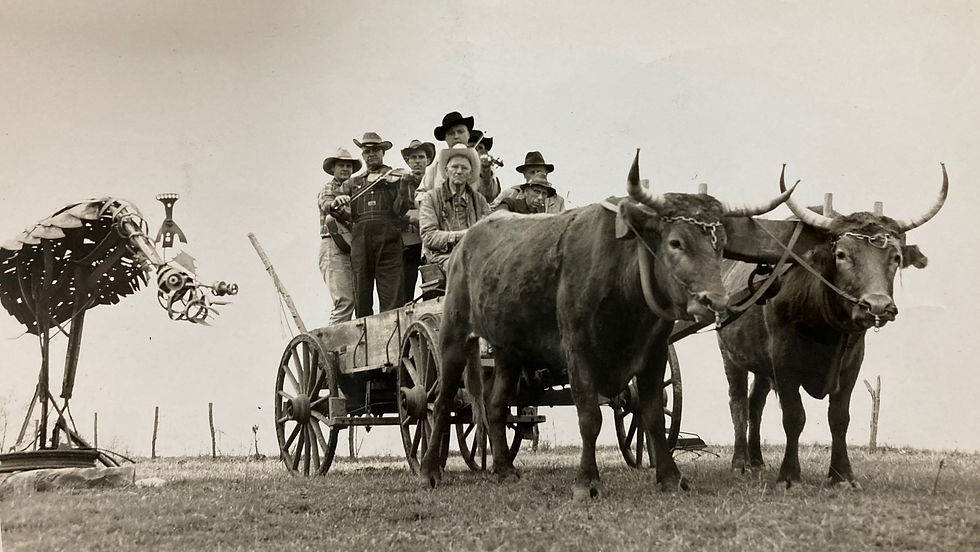Folk Music Saved by the Folks!
- ofccommitteeof100
- Dec 28, 2023
- 2 min read
Updated: Jul 3, 2024

The Otis Gammill farm on Fairview Road in Timbo was the scene for this early Folk Festival publicity photo. Dee Strickland Johnson, Kermit Moody, Margie Batten, Ethyl Treat, Ollie Mae and Carlos Bookmiller Shannon, Jimmy Driftwood, Caroline Rainbolt, Andy Rainbolt, Cleda Morris, Debbie Batten, Otis Gammill, Doc Hollister, Lawrence Meeker, Roy Wrinkle, Leslie Booger Walls, and Percy Copeland.
This Ozark Folk Center 50th Anniversary Legacy Photo is in honor of John Morrow.
From the Committee of One Hundred.
This photo was staged for publicity in the early days of the Folk Festival. It is a great photo and, even if staged, shows that you could still find a wagon and mules at a time when they would have vanished from most other regions of the country. What is not staged are the high number of musicians in the Mountain View area who still played banjo, fiddle, and guitar. When you look through old photos and visit with folks who grew up on Stone County, it becomes clear that music was a big part of community life and it was passed down through generations.

When the Ozark Folk Center opened in 1973, it helped to preserve that music and provide employment for the next decades. By the 1990s, folk music was not as integral at home because, like youngsters everywhere, there were more current music options. Beginning in 1997, the Music Roots program helped to preserve traditional music. Mountain view School superintendent, Danny Thomas, wrote a Career Orientation grant and partnered with the Ozark Folk Center to outline the music program with the Committee of One Hundred helping to fund the initiative. In its 25 years, between 1500 and 2500 students have benefitted and folk music is alive and well in Mountain View. The folks in the wagon who worked so hard to preserve music traditions would no doubt be pleased to see that they succeeded!
The Music Roots program helped save the folk music of the Ozarks. Since 1998, free music lessons and free loaned instruments are available to youngsters beginning in 4th grade. Students who first learned how to play in the Music Roots program have become professional musicians, some have taught folk music, and some still play folk music even as they have gone on to other careers. A declining folk music scene in the 1990s is now a vibrant music destination for musicians of all ages.
This entry by Lenore Shoults with thanks to Robbie Purdom for tracking down this photo in the Stone County Historical Society archive of the Stone County Leader's December 3, 2008 (page 10) feature, "Some Things Have Changed."
The Committee of One Hundred Tribute Wall recognizes contributions to the preservation of Ozark folk culture.
If you would like to help preserve the folk culture of the Ozarks, consider a
The Committee is made up entirely of volunteers so, except for transaction fees, all of your donation funds music, craft, or the herb gardens and, as a 501c3 entity
your donation is tax deductible!
Comments